So Shady: 10 Crops That Can Be Grown Without a Lot of Sun
10 edibles for the shady garden.
So Shady: 10 Crops That Can Be Grown Without a Lot of Sun
10 edibles for the shady garden.
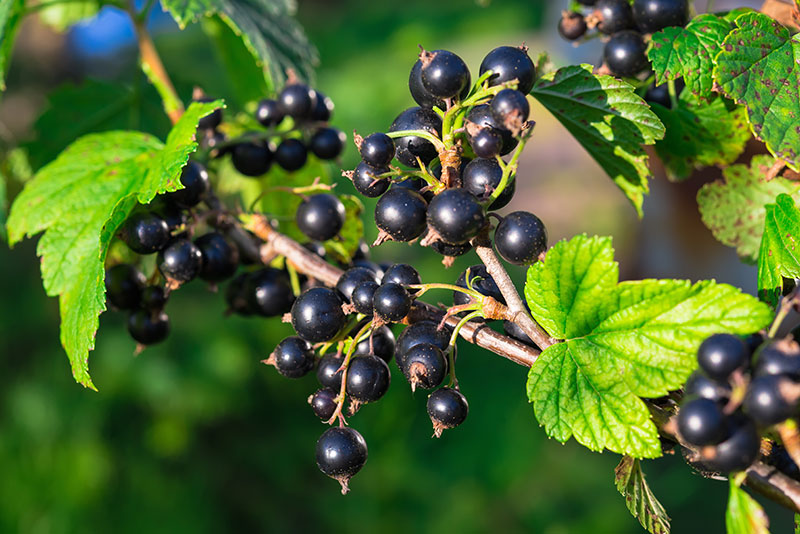
Shade tolerance in fruits and vegetables is a matter of degree. The only edibles you can grow under in deep, deep shade are mushrooms. But there are plenty tasty things that grow in “part shade,” generally defined as two to four hours of direct sun. With four to six hours of sun – “part sun” – the list expands considerably. There are even a few edibles that grow and produce in areas that receive less than two hours of direct sun – “full shade.”
There are many other variables: Part shade on a north-facing slope, or on the north side of a building, is much shadier than on a southern exposure. The density of the tree canopy also factors in: Pine trees, with their slender needles and a branching pattern that tends to hold the foliage at the very top of the tree, cast much less shade than a broadleaf tree with low spreading branches. Ambient light makes a difference, too, so a garden with a single big tree is generally not as shady as a space with numerous trees of all sizes, shrubbery, and buildings all around. Finally, evergreens make shade year-round, while deciduous trees cast virtually no shade in early spring, providing a window of sunlight that an understory of edibles can take advantage of.
Mint – USDA Zones 3-10
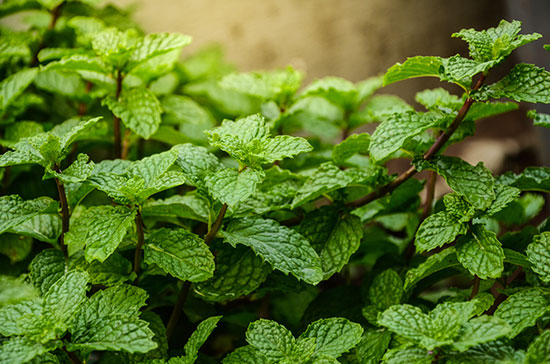
Mojito, anyone? Spearmint is the variety of choice for the classic Cuban cocktail, but there are many other mints with which a refreshing drink of one sort or another can be made (to enjoy in your shade garden, of course): peppermint, chocolate mint, apple mint, ginger mint, and many others. Lemon balm, a closely related and shade-tolerant species adds citrus notes to the mint cornucopia. All mints like rich moist soil and tend to spread, so keep them in a pot unless you plan to establish a mint groundcover in the garden.
Survives in full shade, thrives in part shade.
Salad Greens – Annuals/All Zones
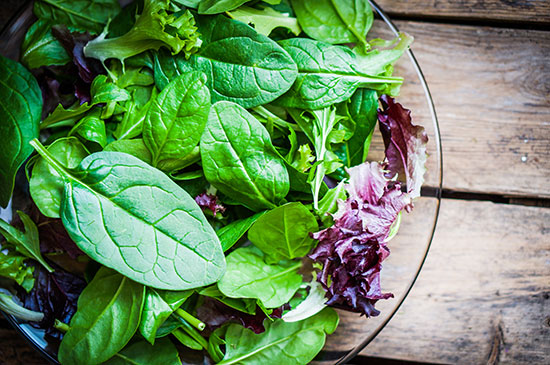
Lettuces and most other edible greens, including kale, chard, collards, Asian greens, and mesclun mix, fair poorly in hot sunny conditions, but grow happily in as little as three hours of sun each day. They “bolt” – that is, send up flower stalks and prepare to set seed, leaving the edible greens bitter – once daytime temperatures settle into the upper 80s. That combination of traits makes them a perfect fit for planting beneath deciduous trees. They will have plenty of sun while the weather is still cool and by late spring will be glad for the shade that the trees provide, thus preventing them from bolting and prolonging the harvest.
Survives in part shade, thrives in part sun.
Currants and Gooseberries – USDA Zones 3-8

The wild relatives of most berry crops originated on the forest floor, though millennia of cultivation and breeding has led to berry bushes that are suited to the field – in other words, to full sun. Blueberries, blackberries, raspberries, and the like tolerate part sun, though with diminished yields. Currants and gooseberries, on the other hand, thrive in fairly shady conditions and feel scalded when planted in full sun. European homesteaders typically plant these waist-high shrubs in the dappled shade of their fruit trees, though North American tastes have never really caught on to the trend. Gooseberries have a hard-not-to-like sweet-tart flavor and a texture that “pops” in your mouth, while it has often been said that fondness for the flavor of currants (a related species) must be “acquired,” which is why they are often combined with sugar and incorporated in pastries and preserves.
Thrives in part shade or part sun.
Alpine Strawberries – USDA Zones 2-9
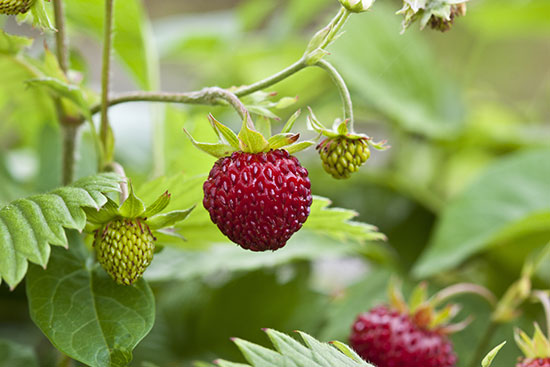
This forest berry also prefers dappled light, though it grows as a groundcover rather than a shrub. Alpine strawberries are a wild type of strawberry that has been cultivated for size and flavor. Native to Europe, where they can be found in supermarkets, Alpine strawberries are less than half the size of the average supermarket strawberry in North America, though they pack twice the flavor – notes of pineapple and rose explode not-so-subtly on the palate. They are easily grown from seed, and once established tend to seed themselves in the understory of deciduous trees.
Thrives in part shade or part sun.
Kolomitka Kiwi – USDA Zones 3-9
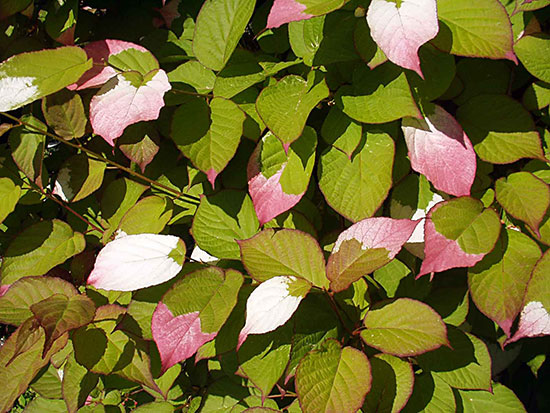
This forest-dwelling vine from Asia is a smaller fuzz-less cousin of the common kiwi found in supermarkets. Not only do they prefer to grow in the shade, they do so in dramatic fashion: The leaves of the kolomitka kiwi are splotched with white and pink, as if a divine artist had spilled their paint in the forest. Kiwis require cross-pollination, so make sure to plant a male and a female variety together.
Thrives in part shade or part sun.
Watercress – USDA Zones 5-9
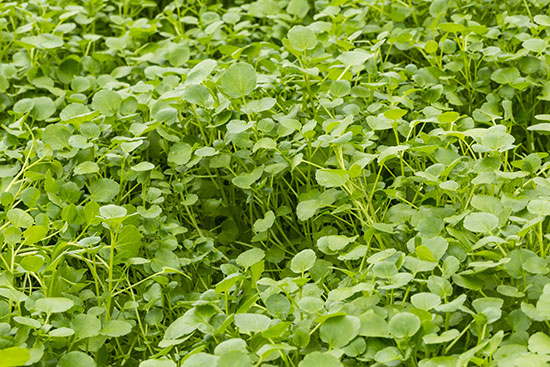
Watercress is an unusual vegetable: shade tolerant, grows in the water, and tastes like a mash-up of wasabi, black pepper, and arugula. If you have a fountain or garden pond, grow it in a pot with the soil line just beneath the water’s surface – it will spread like mad. Otherwise, grow it like any other vegetable, but water it constantly. Growing watercress in a pot set in a pan of water is a good way to keep it waterlogged through the heat of summer. Rather than fiddle with seeds, pick up a bunch of watercress the grocery store and leave the stems in a cup of water for a couple weeks. They will form roots and can then be transplanted to a permanent location.
Thrives in part shade or part sun.
Fiddlehead Ferns – USDA Zones 3-8
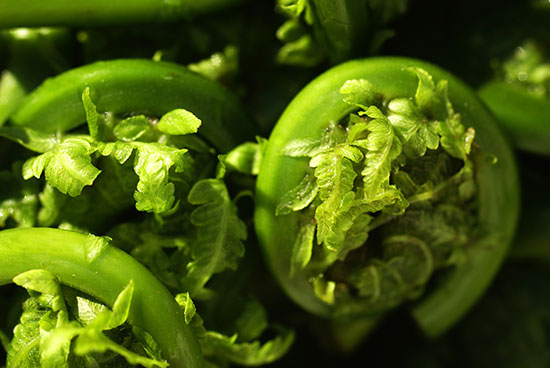
Fiddleheads, the fleshy spiral of a fern frond before it unfurls, is one of the great delicacies of spring. Generally considered a wild foraged food, fiddlehead ferns are easy to grow at home. Not only edible, they are beautiful. That primordial-looking foliage is right at home alongside hostas, hydrangeas, and other shade-loving perennials. The fronds of most fern species start off in a spiral shape, causing confusion as to which are truly edible. Some ferns are mildly toxic and many are unpalatable. Ostrich fern (Matteuccia struthiopteris), a native North American species, is the fern of choice for harvesting fiddleheads. You can find it at online nurseries where it is occasionally sold as an ornamental plant.
Thrives in full shade or part shade.
Hazelnuts – USDA Zones 5-8
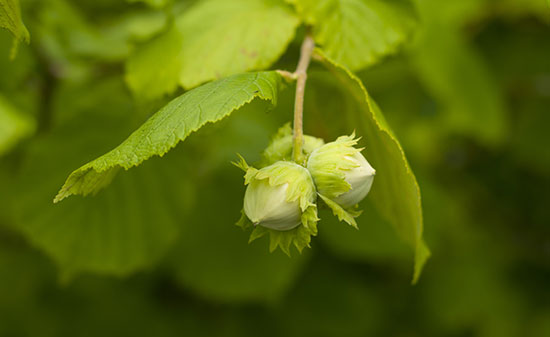
Hazelnuts, also known as filberts, are a small understory tree found in the deciduous forests of Europe and North America. While they produce more nuts in full sun, they are the only nut tree that thrives, let alone produces a harvest, in the shade. And they like cool weather, so a bit of shade is a must for growing them in hot climates. Plant multiple hazelnut varieties to ensure cross-pollination.
Survives in part shade, thrives in part sun.
Pawpaw – USDA Zones 5-9
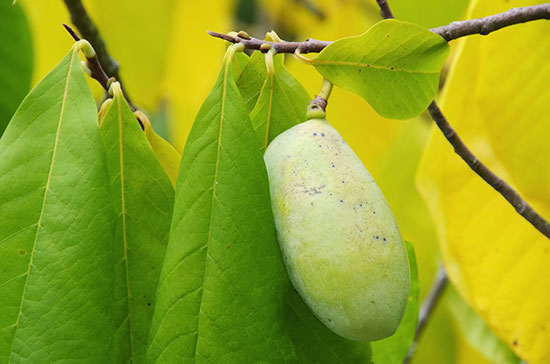
The much celebrated pawpaw has the largest fruit of any plant native to North America, and it prefers to grow in the shade. A distant relative of cherimoyas and other tropical fruits, pawpaws have sweet custardy flesh with a flavor often described as some combination of banana, mango, pineapple, cantaloupe, and any number of other fruits. In other words, the flavor is hard to describe; and it often varies from tree to tree. Plant multiple pawpaw varieties to ensure cross-pollination.
Survives in part shade, thrives in part sun.
Huckleberry – Zones Vary by Species
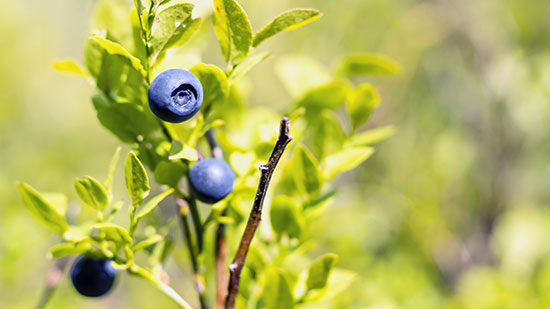
Huckleberries are another wild edible worth growing in the shade garden. These handsome head-high shrubs produce pea-sized fruits that taste much like blueberries, to which they are closely related. There are numerous native huckleberry species found throughout North America, including an evergreen species found in western forests and a black-fruited variety common in the East. Check your local native plant nurseries for the huckleberry best suited to your region.
Survives in full shade, thrives in part shade.
Follow us

This work is licensed under a Creative Commons Attribution-NoDerivatives 4.0 International License.
Want to republish a Modern Farmer story?
We are happy for Modern Farmer stories to be shared, and encourage you to republish our articles for your audience. When doing so, we ask that you follow these guidelines:
Please credit us and our writers
For the author byline, please use “Author Name, Modern Farmer.” At the top of our stories, if on the web, please include this text and link: “This story was originally published by Modern Farmer.”
Please make sure to include a link back to either our home page or the article URL.
At the bottom of the story, please include the following text:
“Modern Farmer is a nonprofit initiative dedicated to raising awareness and catalyzing action at the intersection of food, agriculture, and society. Read more at <link>Modern Farmer</link>.”
Use our widget
We’d like to be able to track our stories, so we ask that if you republish our content, you do so using our widget (located on the left hand side of the article). The HTML code has a built-in tracker that tells us the data and domain where the story was published, as well as view counts.
Check the image requirements
It’s your responsibility to confirm you're licensed to republish images in our articles. Some images, such as those from commercial providers, don't allow their images to be republished without permission or payment. Copyright terms are generally listed in the image caption and attribution. You are welcome to omit our images or substitute with your own. Charts and interactive graphics follow the same rules.
Don’t change too much. Or, ask us first.
Articles must be republished in their entirety. It’s okay to change references to time (“today” to “yesterday”) or location (“Iowa City, IA” to “here”). But please keep everything else the same.
If you feel strongly that a more material edit needs to be made, get in touch with us at [email protected]. We’re happy to discuss it with the original author, but we must have prior approval for changes before publication.
Special cases
Extracts. You may run the first few lines or paragraphs of the article and then say: “Read the full article at Modern Farmer” with a link back to the original article.
Quotes. You may quote authors provided you include a link back to the article URL.
Translations. These require writer approval. To inquire about translation of a Modern Farmer article, contact us at [email protected]
Signed consent / copyright release forms. These are not required, provided you are following these guidelines.
Print. Articles can be republished in print under these same rules, with the exception that you do not need to include the links.
Tag us
When sharing the story on social media, please tag us using the following: - Twitter (@ModFarm) - Facebook (@ModernFarmerMedia) - Instagram (@modfarm)
Use our content respectfully
Modern Farmer is a nonprofit and as such we share our content for free and in good faith in order to reach new audiences. Respectfully,
No selling ads against our stories. It’s okay to put our stories on pages with ads.
Don’t republish our material wholesale, or automatically; you need to select stories to be republished individually.
You have no rights to sell, license, syndicate, or otherwise represent yourself as the authorized owner of our material to any third parties. This means that you cannot actively publish or submit our work for syndication to third party platforms or apps like Apple News or Google News. We understand that publishers cannot fully control when certain third parties automatically summarize or crawl content from publishers’ own sites.
Keep in touch
We want to hear from you if you love Modern Farmer content, have a collaboration idea, or anything else to share. As a nonprofit outlet, we work in service of our community and are always open to comments, feedback, and ideas. Contact us at [email protected].by Brian Barth, Modern Farmer
July 15, 2016
Modern Farmer Weekly
Solutions Hub
Innovations, ideas and inspiration. Actionable solutions for a resilient food system.
ExploreExplore other topics
Share With Us
We want to hear from Modern Farmer readers who have thoughtful commentary, actionable solutions, or helpful ideas to share.
SubmitNecessary cookies are absolutely essential for the website to function properly. This category only includes cookies that ensures basic functionalities and security features of the website. These cookies do not store any personal information.
Any cookies that may not be particularly necessary for the website to function and are used specifically to collect user personal data via analytics, ads, other embedded contents are termed as non-necessary cookies.
Wow, this article was so helpful! I’m planning a garden at a new place & your tips are awesome!
We have squashberrys(high bush cranberrys) and wild currants that seem to prefer being in the decidious woodlot. We have a farm in Labrador.
Would like to learn more. Thank you for the information so far ☺
Thank you
Interested
such a good list the at gives ideas